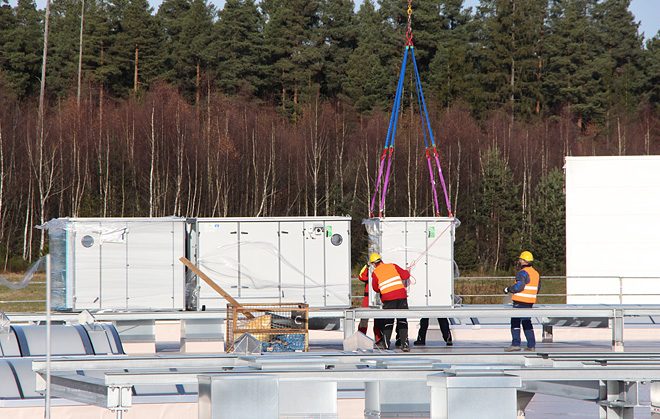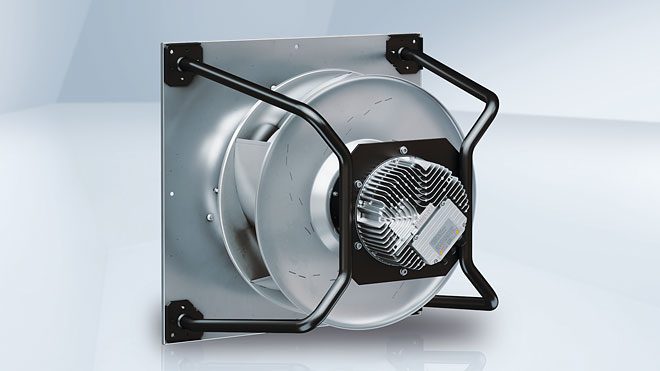Some situations require new ways of thinking – and setting up the air conditioners on the roof of the ebm-papst location in Hagenmoos/St. Georgen was one of them! The factory hall is simply too large for conventional setup with a crane. They would have had to build an access road especially for the crane. Instead, they decided to transport the five air conditioners to the roof via helicopter. However, it has a load limit of 1.2 tons. This is why on December 9, 2016, the helicopter had to fly a total of 20 times: each air conditioner consists of four parts that were re-assembled on the roof.
ebm-papst is a fan supplier and customer at the same time
Technical planners and plant engineers were commissioned with the technical planning of the air conditioning in the second construction phase. According to Andreas Gleichauf, Head of House & Building Management at ebm-papst in St. Georgen: “Our specifications said that we could only use the most up-to-date, efficient products. For air conditioning, that means the EC fans from ebm-papst in Mulfingen. And we wanted to use our own fans.” Laughing, he added: “After all, we’re all part of ebm-papst.”
The decision to use air conditioner manufacturer NOVA Apparate from Donaueschingen was easy to make. The rooftop air conditioners satisfied all the requirements in the invitation to tender and the headquarters of the medium-sized company with 130 employees is only 30 kilometers away from St. Georgen. “To us, it was also important to work with a manufacturer from the region,” said Gleichauf. NOVA Apparate GmbH is one of the most innovative equipment manufacturers in Germany, contributing over 50 years of experience to projects.

Delivery via helicopter (Photo: ebm-papst)
Efficient EC technology from Mulfingen for St. Georgen
The air conditioners work with energy-saving EC centrifugal fans from ebm-papst Mulfingen’s new RadiPac series. They are specially designed for use in air conditioners and room ventilation devices. The aluminum hollow profile blades of the backward-curved centrifugal fans are more efficient and the profile shape of the blades reduces the impeller’s weight. The air conditioners are also equipped with thermal wheels and plate heat exchangers to recover heat, saving energy and money in the process. The humidity efficiency limit is 90%, which means the devices can be operated to the benefit of the environment at minimal operating costs.
Additional investment volume of €15 million
The opening ceremony for the first construction phase with an area of 3,800 m2 for a new electronics production line was held in March 2016. At the same time, the cornerstone for the second phase – with an additional investment volume of €15 million – was laid. With this investment, ebm-papst St. Georgen will be adding another 10,000 m2 to the area in Hagenmoos. The building will increase production capacity for the automotive and drive engineering divisions while adding more space for logistics and administration. The space vacated at headquarters will be converted and expanded for the Research & Development department.

The centrifugal fans in the RadiPac product range from ebm-papst Mulfingen will air condition the ebm-papst buildings in St. Georgen. (Photo | ebm-papst)
“Icebox” is the highlight of the energy concept
The new building’s highlight is a modern energy concept that seamlessly follows the environmental and sustainability goals that have guided ebm-papst for years. Two so-called “iceboxes” with a total volumetric capacity of 1,000 m³ are the central heat and cold source.
The plant takes advantage of the physical principle of the latent heat of freezing: when water goes from the liquid to the solid state, energy is released. A heat exchanger removes the energy from the water, which is used to create warm water. To close the circuit, a regenerator thaws the water again with heat extracted from the outlet air.

Leave a comment